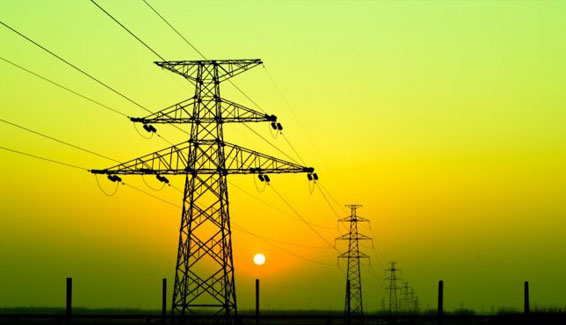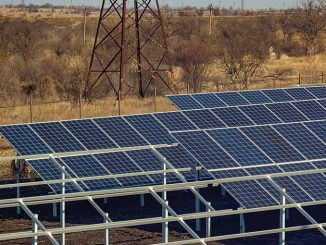
Adequate transmission systems are critical to India’s renewable energy plans. Without proper transmission systems in place, no renewable energy can be transported from generation points to demand centers. Transmission lines, particularly, are vital to ensure renewable energy integration into the grid and its conveyance to power distribution utilities and commercial and industrial consumers. Many projects have been announced recently in order to accelerate development of transmission lines to connect key renewable energy zones with demand centers. Further, there is significant focus on improving technology, reducing faults, and enhancing reliability.
High voltage transmission lines are being developed across the country using technologies such as flexible alternating current transmission system (FACTS) and high voltage direct current (HVDC) to improve the stability of the grid system. Both of these help in reducing transmission losses, optimising the power flow, and increasing transmission capacity. In addition, there have been improvements in design of cables and conductors to increase efficiency. Dry extruded cables are now replacing wet paper insulated ones, while covered cables like cross-linked polyethylene (XLPE), high density polyethylene, aerial bunched cables and spacer cable systems have become popular. Further, electron-beam or e-beam cable, which can be used in high temperature applications like the solar space are also gaining traction. And so are gas-insulated transmission lines that take up much less space while providing the same power transmission as the conventional overhead lines.
In the conductor space, there is focus on higher temperature ratings and current carrying capacities, and thus, in recent years, advanced conductor technologies such as high temperature low sag (HTLS) conductors, superconductors and extra high voltage (EHV) lines are being increasingly preferred to conventional conductors. Aluminium conductors like aluminium conductor alloy reinforced (ACAR), aluminium conductor steel reinforced (ACSR) and aluminium conductor carbon fibre reinforced (ACFR) are now replacing copper conductors.
Transmission lines deployment
One of the major issues that has continued to plague renewable energy development in the country is the unavailability of adequate transmission capacity. Renewable energy projects have shorter gestation periods when compared to transmission systems, and thus, many are left stranded waiting for grid connectivity. Although measures have been taken to quicken the pace of development of transmission towers, lines and substations, there is still a significant backlog.
The Central Electricity Authority (CEA), in fact, released a report last year on “Transmission System for Integration of over 500 GW RE Capacity by 2030” and this report announces plans for transmission systems for about 537 GW of renewable energy capacity in major renewable energy potential zones. The transmission schemes in this study have been planned taking energy storage into consideration, and it estimates that about 50,890 ckt. km of additional transmission line capacity is required under the inter-state transmission system (ISTS) for integrating additional wind and solar capacity by 2030. Further, several HVDC transmission corridors have also been planned for the evacuation of power from large renewable energy potential zones.
The last few months of 2023 witnessed significant activity in the transmission space as the country rushes to meet its renewable energy targets by the 2030 deadline. For instance, recently Adani Energy Solutions Limited (AESL) announced that it has received a letter of intent for Halvad Transmission Limited from PFC Consulting Limited. Halvad transmission line will support in the evacuation of 7 GW of renewable energy by connecting Khavda and Halvad, both in Gujarat. The transmission project will span over 301 km (656 ckm) and entails line-in line-out of the Lakadia–Ahmedabad 765 kV DC line at Halvad and the establishment of a 765 kV Halvad switching station with two 330 MVAr bus reactors.
Further, in December 2023, NTPC Renewable Energy Limited issued a request for proposals for land and an EHV transmission package for 800 MW ISTS-connected solar projects coming up in Maharashtra. Around the same time, Tata Power Limited received a letter of intent for Bikaner-III Neemrana-II Transmission Limited which aims to facilitate the evacuation of 7.7 GW of clean energy from the Bikaner complex in Rajasthan. The project involves creating a transmission corridor spanning approximately 340 km, connecting the Bikaner-III pooling station to the Neemrana II substation.
In addition, in November 2023, Sterlite Power was awarded the contract for the transmission project in Rajasthan’s renewable energy zone (REZ), phase IV (Bikaner complex). The project aims to facilitate the transmission of approximately 8,000 MW of renewable energy from Bikaner to load centers in Rajasthan, Haryana, and Uttar Pradesh. It includes building a 6,000 MVA, 765/400 kV substation at Neemrana, and constructing two 400 kV transmission lines covering approximately 250 km. These lines will link Neemrana to the current Kotputli substation and also connect the existing Gurgaon-Sohna line with both Gurgaon and Sohna substations.
In the same month ReNew announced the commissioning of its first ISTS project that will help to facilitate the transmission of 1,500 MW of clean energy in the Koppal area of Karnataka. This Koppal Transmission Scheme encompasses the construction of a new 400/220 kV substation at Koppal, along with a 276 Ckt Km 400 kV D/C quad moose transmission line and the extension of the 400 kV GIS bays at the new PGCIL Narendra substation. Thus, it can be safely assumed that there has been a definite increase in pace of deployment of transmission lines.
Issues and solutions
Apart from the delays in commissioning of transmission lines and related systems in time for renewable energy projects, there are other issues regarding clean energy integration into the grid. Due to grid constraints, there have been many instances of generation curtailment, which results in losses for renewable power project curtailment. This is especially the case in high wind monsoon season when wind power generators often face issues of grid curtailment.
Further, there remains the concern regarding urgent requirement of ample and robust transmission capacity that can offtake large volumes of infirm renewable power. Solar and wind power, both have erratic generation patterns, and this can impact grid operations. Transmission system faults can occur within renewable power projects, or they can be external, and issues of overvoltage during line or reactor switching can also happen. Such grid events can create ripples leading to grid failures and loss of power supply, thereby threatening grid security.
Grid India’s recent report on Events Involving Transmission Grid Connected Wind & Solar Power Plant investigates 31 such grid events. According to the study, these events that were associated with frequent loss of renewable energy generation over the period January 2022 to May 2023, in ISTS-connected renewable energy pockets and resulted in generation losses ranging from 1,000 MW to 7,000 MW in individual events. Further, non-compliance during low voltage ride through and/or high voltage ride through events resulted in a loss of 6-7 GW power in Rajasthan’s renewable energy complexes. An in-depth analysis of these events points to various causes like undesirable behaviour of inverter-based resources, low short-circuit ratio in certain pockets, improper coordination of protection settings between renewable energy plants and the evacuating transmission system as well as non-compliance of the CEA’s technical standards and inverter controller interactions among others.
To ensure that these such events can be avoided in the future, forward-looking technical standards and grid codes need to be developed to keep pace with new technologies in inverter-based resources, battery energy storage systems and hydrogen electrolysers. Further, constant vigilance and monitoring is essential to avoid such incidents that can cause significant harm to both property and life. There is a need for more stakeholder consultations and transfer of technologies and ideas in order to prepare the Indian grid to become ready for the large influx of renewables.
Going forward, adequate planning and streamlined implementation of transmission lines and associated systems are vital for continued deployment of renewables in India. Continuous technology upgradation and adoption of state-of-the-art quality products is crucial as these systems are built to last for years, and are important assets for the overall energy security of the country.



